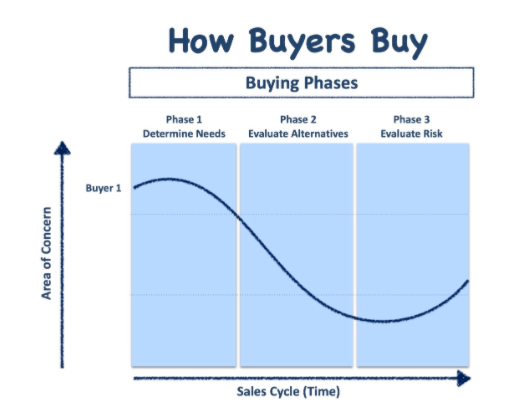We all buy the same way. Buying a TV, a car or even software for a health system. It starts the same and ends the same, so why not sell with that in mind?. A purchase decision is broken into three phases, Determine Needs, Evaluate Alternative and Evaluate Risk. Your sales process should reflect this.
All buying decisions start with a need. In phase two, a buyer begins to evaluate alternatives. Doing nothing is always the first alternative but risk becomes a growing factor in evaluating options. Ultimately in phase three, a buyer is weighing heavily on risk and cost over fundamental needs.
Depending on who in the organization you are selling to, the buyer focuses more or less in each stage. For example (see chart), Buyer 1 is concerned about needs but less concerned about risk. Buyer 1 is probably an end user not an executive. Executives care more about risks and less about needs in stage one.
Think of the last time you bought a car. Initially you want everything on the car, including heated seats. As you look around for options (phase 2) price starts coming into the picture and features are a little less important. In the final stage you worry about price and the risk of your decision (will the car not break down).
Try this, as a group, outline the decision process of buying a TV in someone’s household. The children (staff) do not care about risk in the beginning, they just want all the features. What about mom (Executive) and dad (Management) in each phase? Now do the same group exercise with your solution and a buyer.





